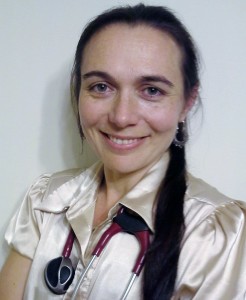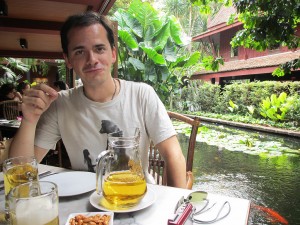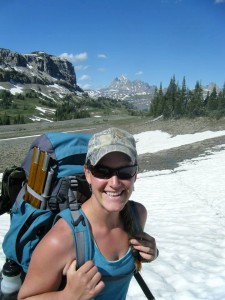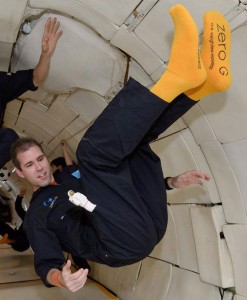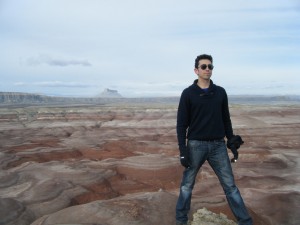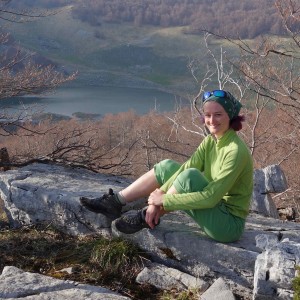HI-SEAS Crew Reaches Half-Way Mark
It’s been six months since the fourth mission of the Hawai’i Space Exploration Analog and Simulation, better known as HI-SEAS began.
Six crew members launched on yearlong isolated journey on Aug, 28 and have resided in a solar power dome on the slopes of Mauna Loa since.
The HI-SEAS mission is part of a research project being conducted through the University of Hawai’i at Manoa, simulating long duration space exploration, and is being funded by NASA.
“Itʻs fun to know you’ve made it halfway,” said crewmember Tristan Bassingthwaighte, who is a Doctor of Architecture candidate at UH Manoa.
“Getting halfway is a great validation in the work you’re doing for yourself, academically or just personally,” said Bassingthwaighte. “You also find you’re listening to ʻLife on Marsʻ by David Bowie a lot more often.”
The projects aim is to develop an understanding of the development of effective team composition and support strategies that would allow crews to successfully make the journey to Mars, which is an estimated three-year time period.
This is the longest mission ever conducted by HI-SEA and follows three previous journey’s conducted in shorter time spans. As with the current mission, missions two and three also NASA funded outlined crew member cohesion and performance.
Carmel Johnston, a soil scientist from Montana, who is the missions crew Commander is looking forward to the missions end, to see her family, among other things taken that aren’t easily taken for granted living in a dome.
“It will be really fun to go swimming in the ocean, go for a run, feel the wind, smell the rain and other smells of nature, and be able to walk in a straight line that is longer than 20 feet,” said crew Commander Carmel Johnston. “Those things aside, life in the dome is pretty awesome.”
The crew will remain in the habitat until August 2016.
Funds from NASA will continue the research HI-SEAS in conducting through 2019.
HI-SEAS crew members for the 2015-2016 mission include:
Sheyna Gifford has worked on research projects in astrophysics, neuroscience and psychology and is a contributor to NASA educational websites, a medical writer, and an advocate of STEM education. Her previous work includes working on the HESSI satellite at Space Science Laboratories. She holds a bachelor of science in neuroscience and english, a master of clinical laboratory science and biotechnology, a master of science in journalism, a doctor of medicine and is currently earning a master of business administration.
Tristan Bassingthwaighte is currently a doctor of architecture candidate at UH Mānoa. He is in the final stage of completing his master’s degree in architecture from Tongji University in Shanghai, where he studied abroad for a year looking at human habitation in extreme environments. His doctoral work will involve designing a next generation conceptual Mars habitat.
Carmel Johnston is a soil scientist from Whitefish, Montana. Her previous research focused on the effects of permafrost thaw on trace gas emissions in peatlands. Her interest in global food production and sustainability lead her to HI-SEAS to research food production in Mars simulation. She has a bachelor of science in soil and water science and a master in science in land resources and environmental sciences from Montana State University.
Andrzej Stewart is an ardent light aircraft pilot and previously worked at Lockheed Martin as an interplanetary flight controller. He’s worked on console for the Spitzer Space Telescope, Mars Odyssey, MRO, MAVEN, Juno and GRAIL. Recently, he served as the flight engineer for the sixth mission of NASA’s Human Exploration Research Analog (HERA), simulating a two-week journey to asteroid 1620 Geographos. He earned a bachelor of science in aerospace engineering from the University of Texas at Austin in 2005 and an SM in aeronautics and astronautics from MIT in 2007.
Cyprien Verseux is a doctorate student at the University of Rome. He is an astrobiologist working on the search for life beyond Earth and is also an expert in biological life support systems for Mars exploration. Part of his research aims at making human outposts on Mars as independent as possible of Earth, by using living organisms to process Mars’ resources into products needed for human consumption.
Christiane Heinicke is a German physicist and engineer. Most recently, she has worked on sea ice and has also gained experience working with polar lights, metal melts, and simulations of the Earth’s mantle. She received her bachelor of science in applied physics from the Ilmenau University of Technology in Germany and her master of science in geophysics from Uppsala University in Sweden.
Biographical information was provided by UH Manoa.





